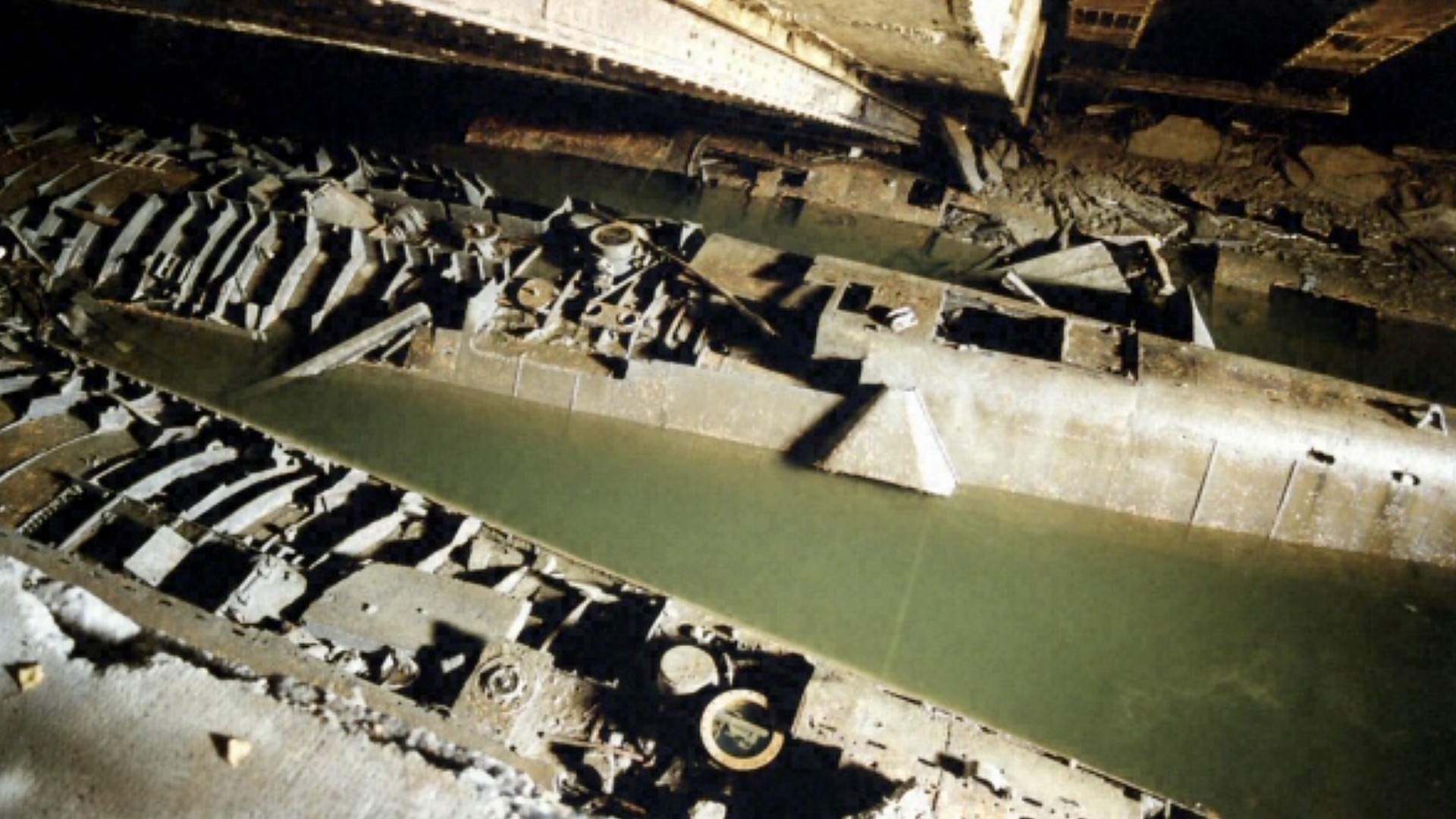In many areas of Europe, it’s hard to escape the visual reminders of World War II’s devastating impact. Numerous buildings, bunkers, and military installations that survived the war, both in Germany and across the continent, attest to this. However, in the mid-1980s the discovery — or, rather, re-discovery — of three German U-boats entombed in an abandoned U-boat bunker in Hamburg brought to light an altogether unknown history.
The boats in question, U-2505, U-3004, and U-3506, all XXI type U-boats, were found in the remains of Elbe II — a U-boat bunker off the River Elbe in Hamburg which was constructed by the Nazis during the early years of the war. The U-boats themselves were used as training vessels in wartime, and did not undertake patrols. While they might at first glance seem less interesting than U-boats which were used operationally, the story of how they came to survive the war in Elbe II, and how they were unearthed by the German historian and journalist Jak P. Mallmann-Showell, is wild, to say the least.
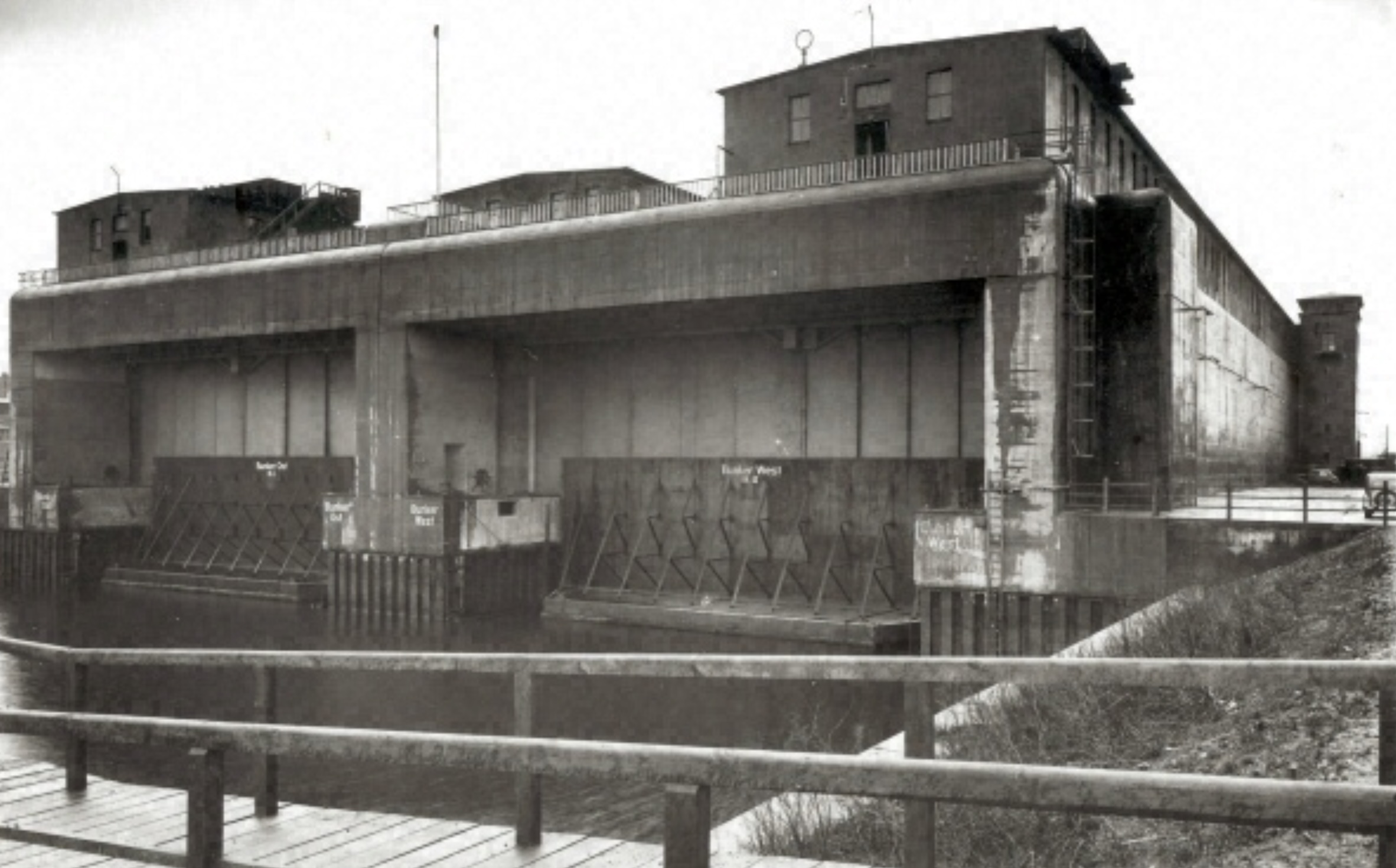

U-2505, U-3004, and U-3506 were all ordered in November 1943, and built by three different ship manufacturers — U-2505 was built by Blohm & Voss, U-3004 by Aktien-Gesellschaft-“Weser,” and U-3506 by Schichau-Werke. Each had a displacement of 1,621 tons surfaced (1,819 tons submerged) and measured just over 251 feet long. The boats were rated to test depths of some 920 feet. It was not until late in the war that they were put into service by the Kriegsmarine, however. U-2505 was commissioned in November 1944, U-3004 in August 1944, and U-3506 in October 1944.


At the time the war in Europe was nearing a conclusion in the spring of 1945, the three U-boats — along with two non-commissioned Type VIICs, U-684 and U-685 — were crammed together in Elbe II’s western-most pen.
Principally designed to provide cover for XXI U-boats while being fitted out, Elbe II was located at the Howaldtswerke yards on the River Elbe. From as early as the end of 1939, the German High Command had plans to build submarine bunkers in exposed locations. This included “Vulkanhafen,” named after the Stettiner Vulkan Works which originally built a shipyard on the River Elbe in 1905, and constructed submarines for the Imperial German Navy during World War I. From as early as 1930, Howaldtswerke of Kiel took over the yards.

Construction of Elbe II began in late-1940 by the firm Dyckerhoff & Widmann AC at the east end of the Vulkan basin, and was completed in March 1941. Its side and supporting walls were made from around 50,000 cubic meters (or 1,765,733.3 cubic feet) of reinforced concrete. Its ceiling thickness was three meters (just under 10 feet), while its outer walls were two and a half meters (just over eight feet) thick.
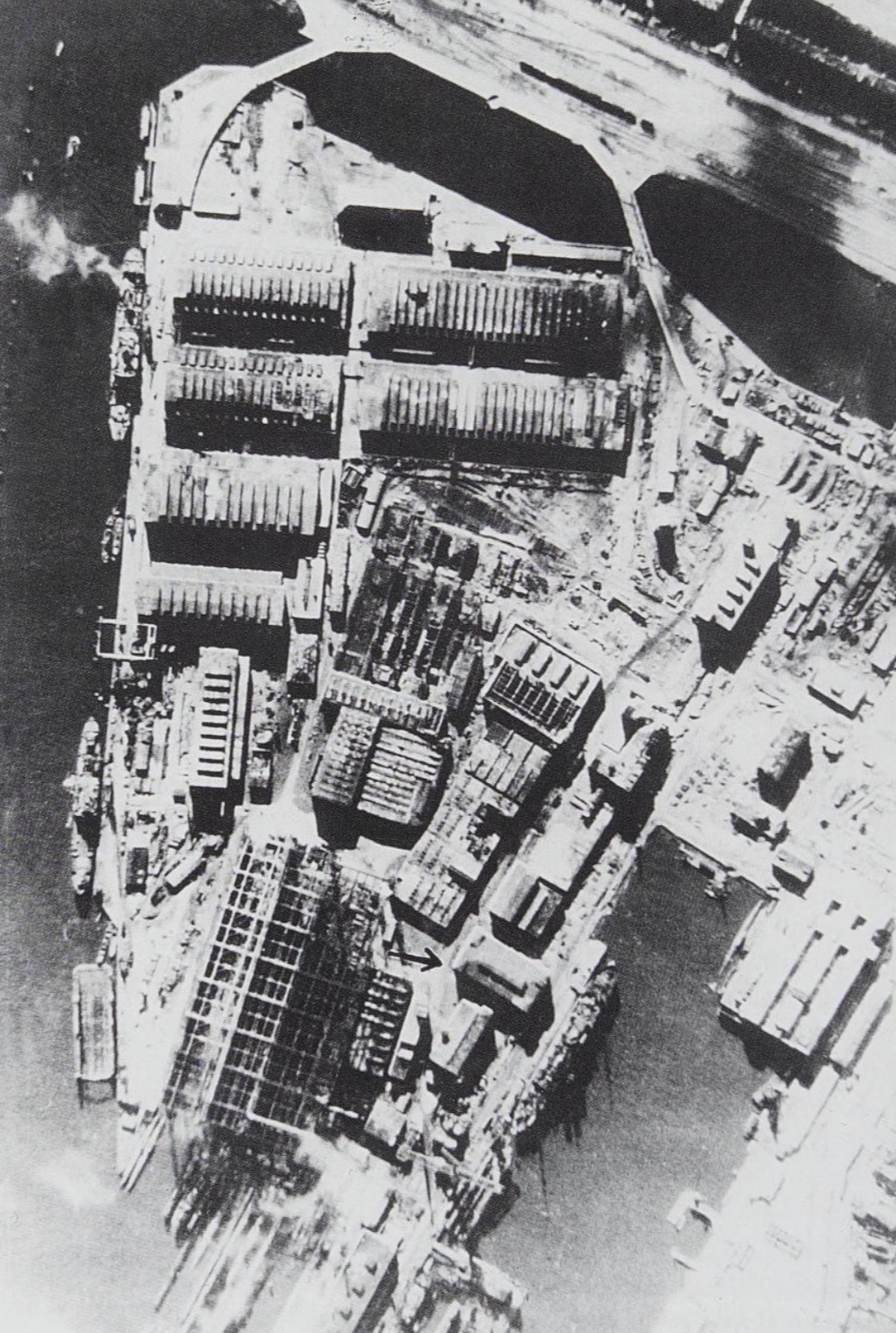
Alongside dedicated facilities for personnel to work on the XXI U-boats, the bunker itself consisted of two wet pens. Each of these ran 112 meters (some 367 feet) long and 22.5 meters (nearly 74 feet) wide. Both pens could accommodate three boats moored side-by-side, and there was space to add six additional pens to the sides if necessary; although this was never completed.
Although it managed to survive the onslaught of Allied bombing raids on Hamburg, which began in July of 1943, Elbe II did sustain some damage during the war, notably in 1945. A direct hit by a Tallboy bomb in March of that year caused the three meter (almost 10 foot) thick ceiling to bend slightly. On April 8, the impact of a direct bomb hit ended up blowing the large steel entrance doors of the bunker off. However, the vessels inside remained undamaged.
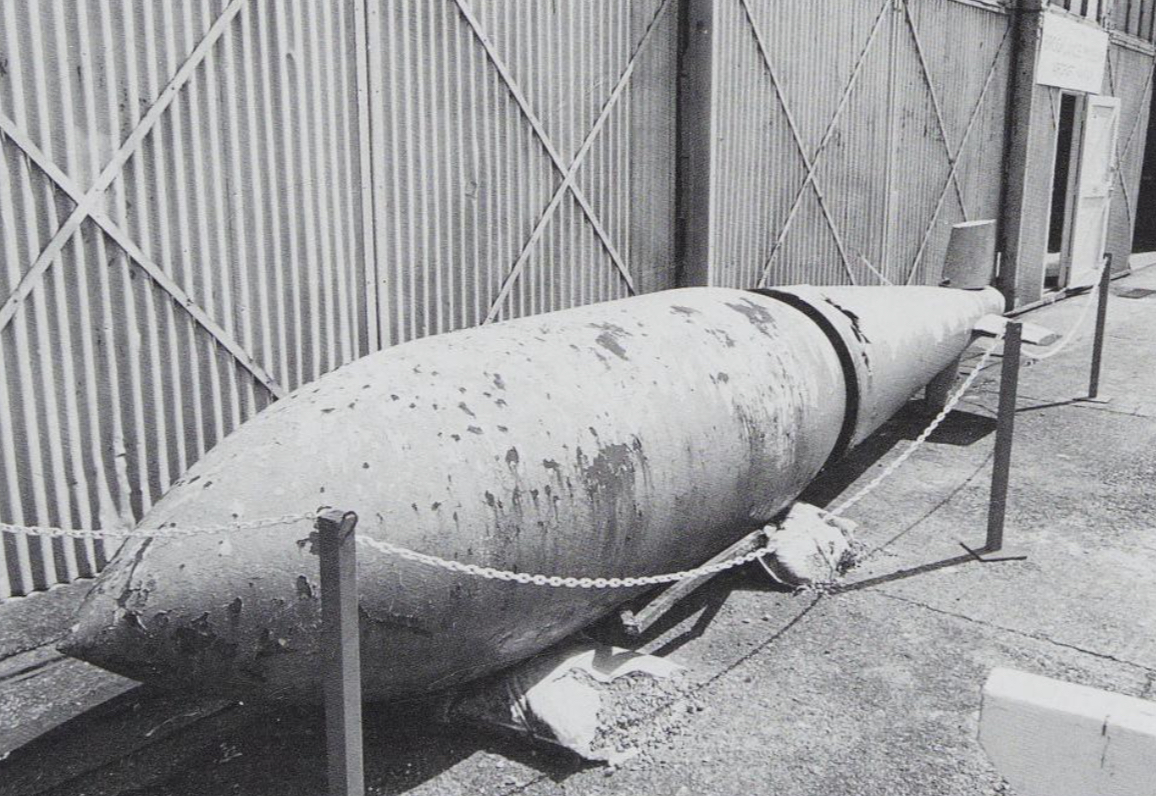
Around the time that Germany agreed to surrender Hamburg to the British on May 3, 1945, plans to scuttle the five U-boats housed in Elbe II using explosive charges as part of Operation Regenbogen were enacted. On April 30, following his appointment as Germany’s head of state and supreme military commander due to Hitler’s death by suicide, Grand Admiral Karl Dönitz ordered that Germany’s entire existing U-boat fleet be scuttled to prevent it from falling into the hands of the Allies. Operation Regenbogen only lasted until around May 4, but this was enough time for the Eble II-based boats to be sunk.

U-684 and U-685 were both scuttled in the harbor in front of Elbe II. However, the three XXI boats were scuttled inside the westernmost pen by their own crews rather than in the River Elbe, the reasons for which are unclear. A fourth boat, U-2501, was sunk in front of the bunker.


Months after victory in Europe was declared on May 8, 1945, troops from the Royal Engineers used a stockpile of captured Luftwaffe ordnance to blow up the bunker on November 11. The resulting explosion caused the central dividing wall between the two pens to collapse. Without the support of said wall, the ceiling ended up breaking, with the impact crushing U-3506. However, U-2505 and U-3004 remained intact.
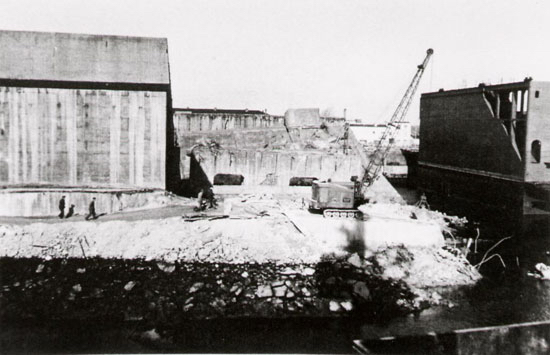

While there remains a lack of imagery of this occurring, photos from the Imperial War Museum in London do show Royal Engineers blowing up Fink II, a much larger U-boat shelter also located in Hamburg off the River Elbe, using Luftwaffe ordnance in mid-October 1945.


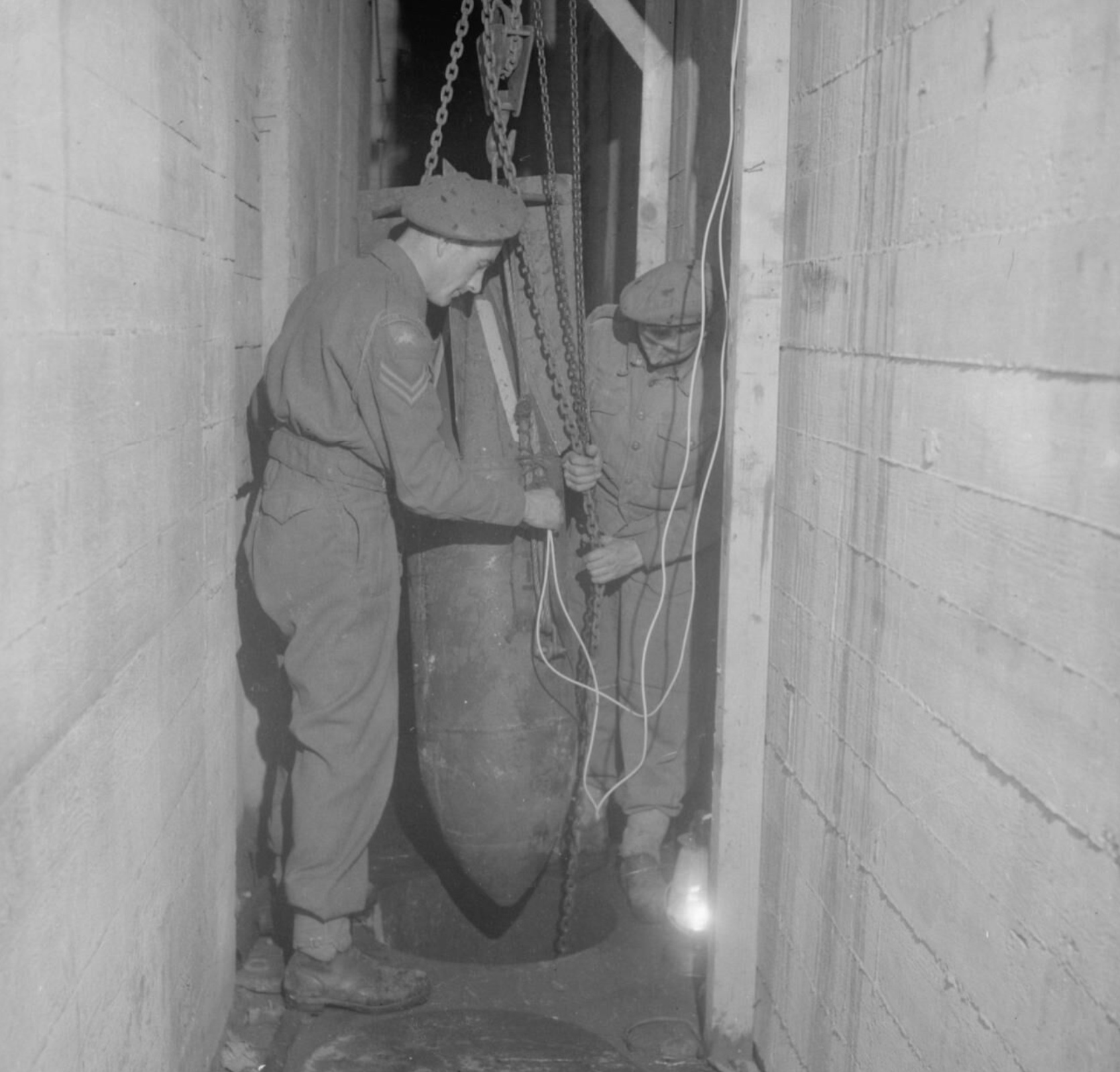
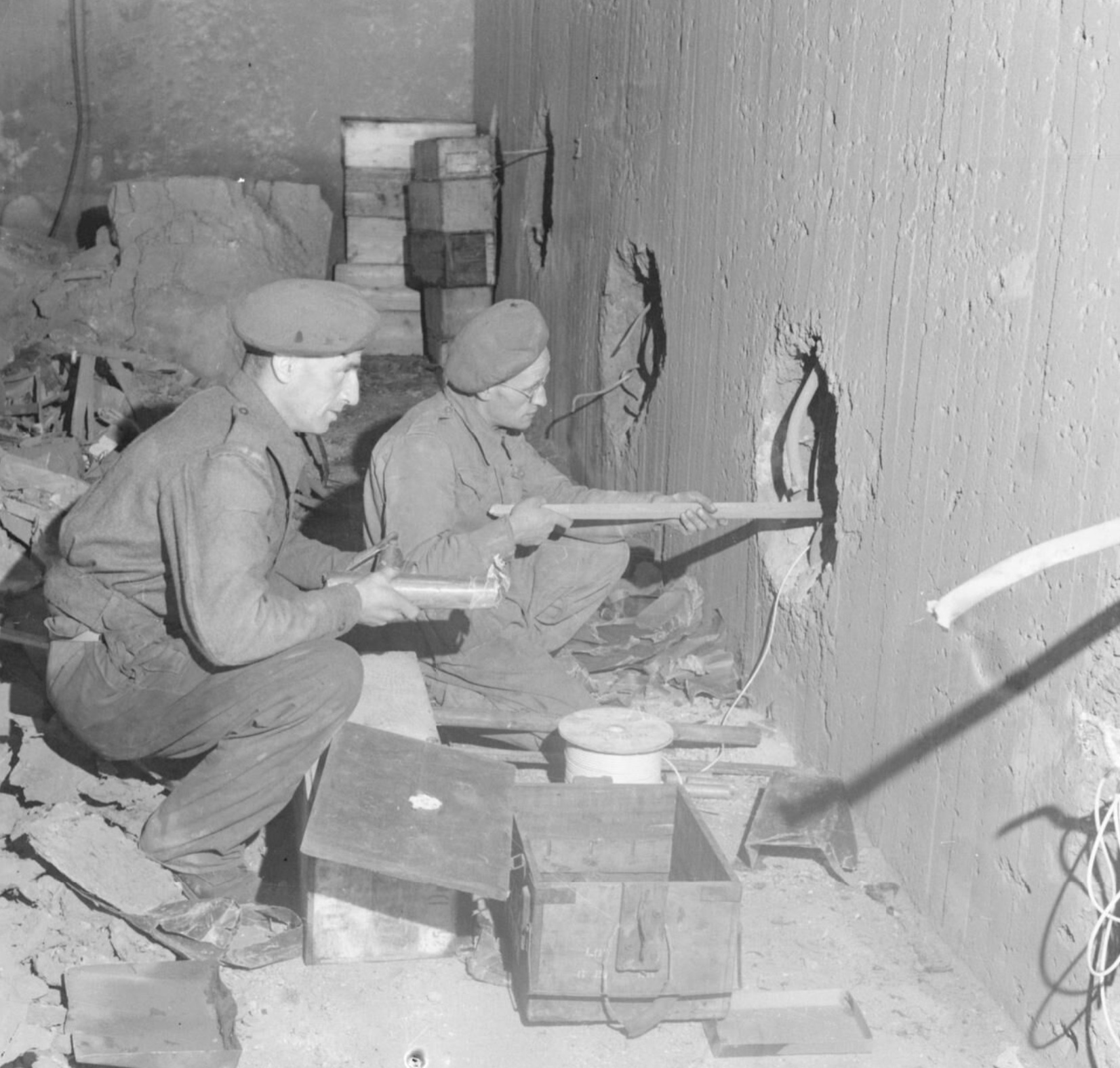


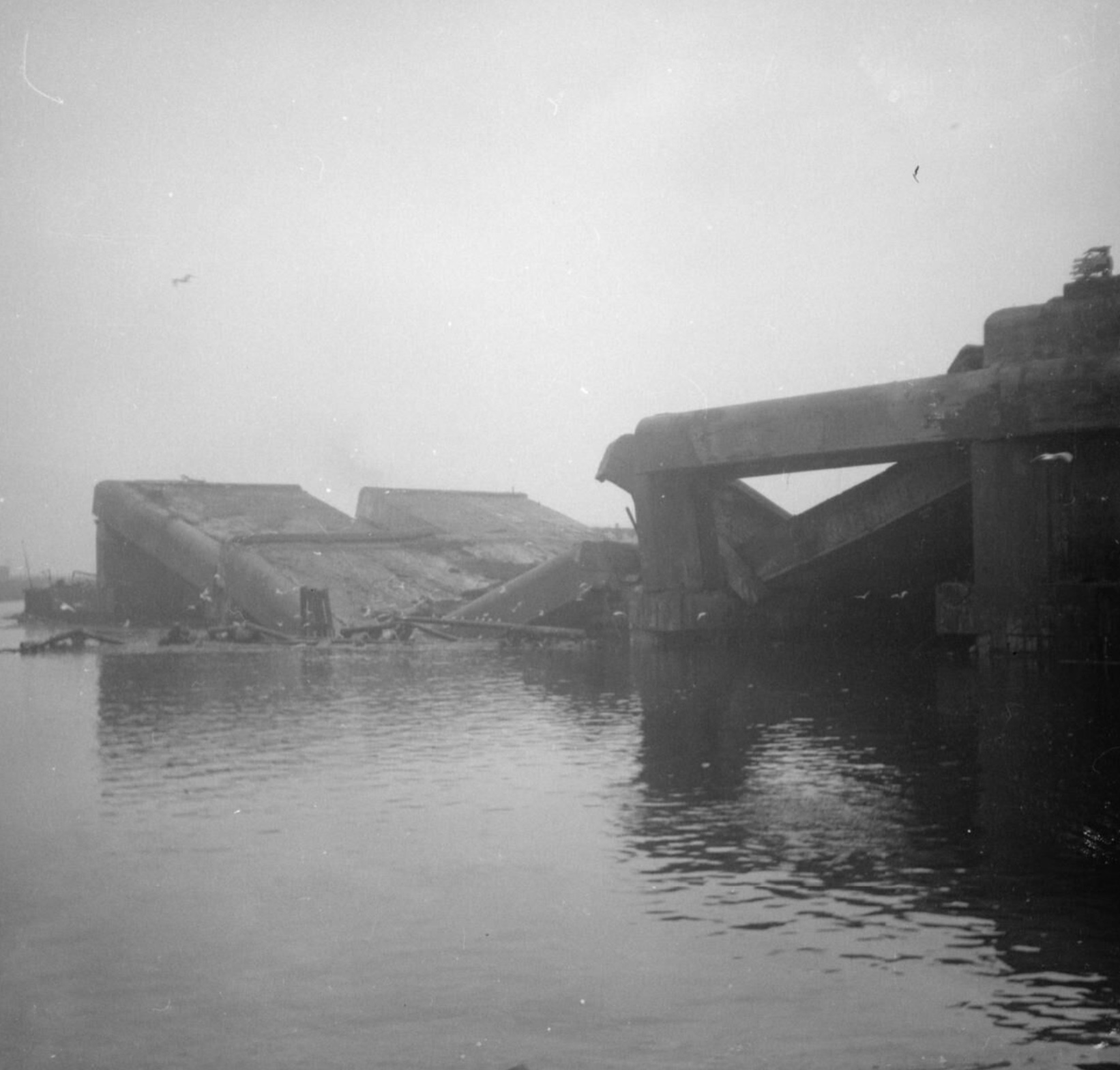
Initial construction on that shelter, which was originally a four-pen bunker, began in March 1941 by main contractors Wayss & Freytag and Benton & Monierbau AG. Eventually, by April 1944, Fink II would become a five-pen bunker capable of accommodating some 15 boats — three in each pen nestled side-by-side. Remnants of that bunker are still visible today.
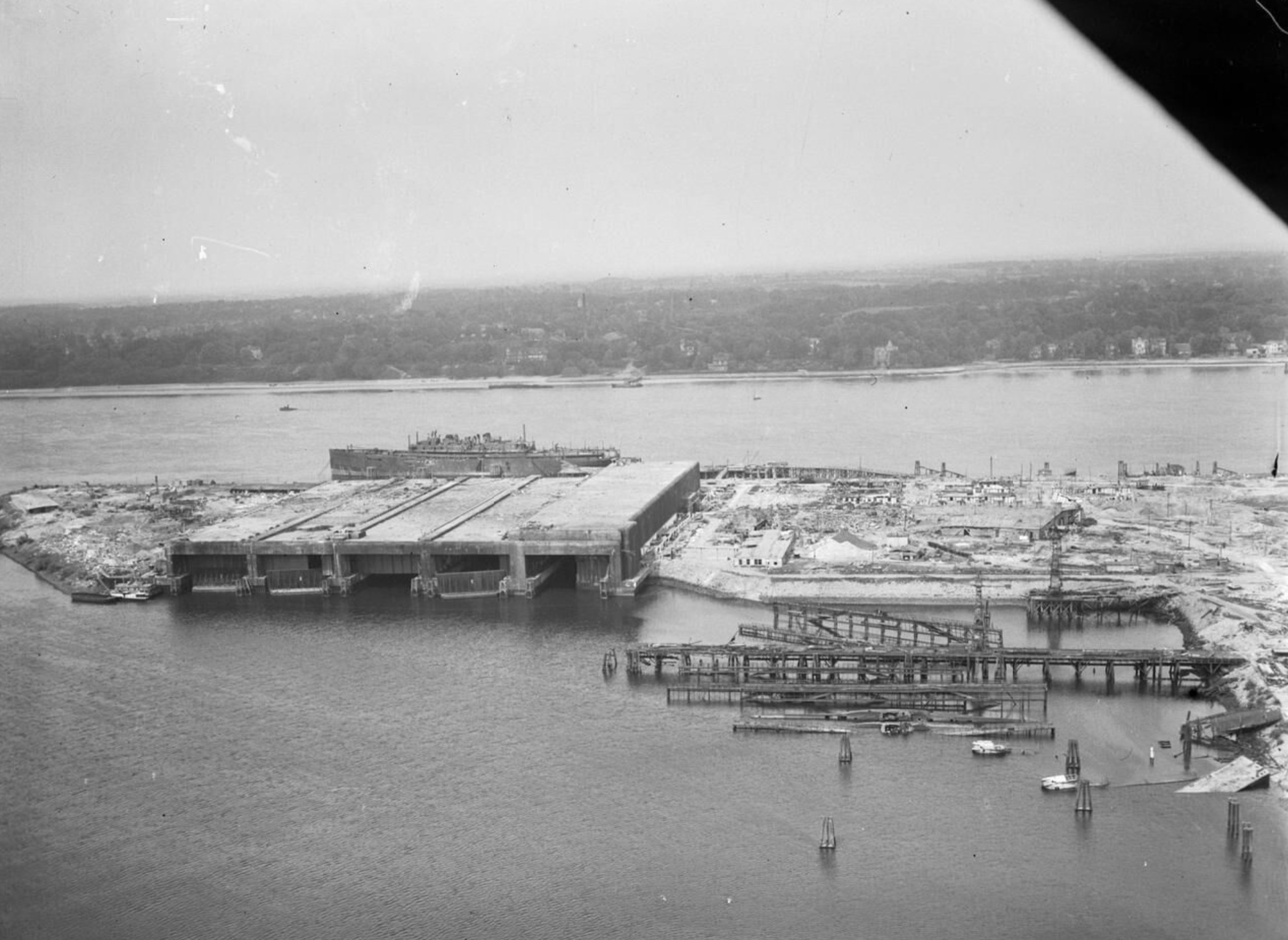
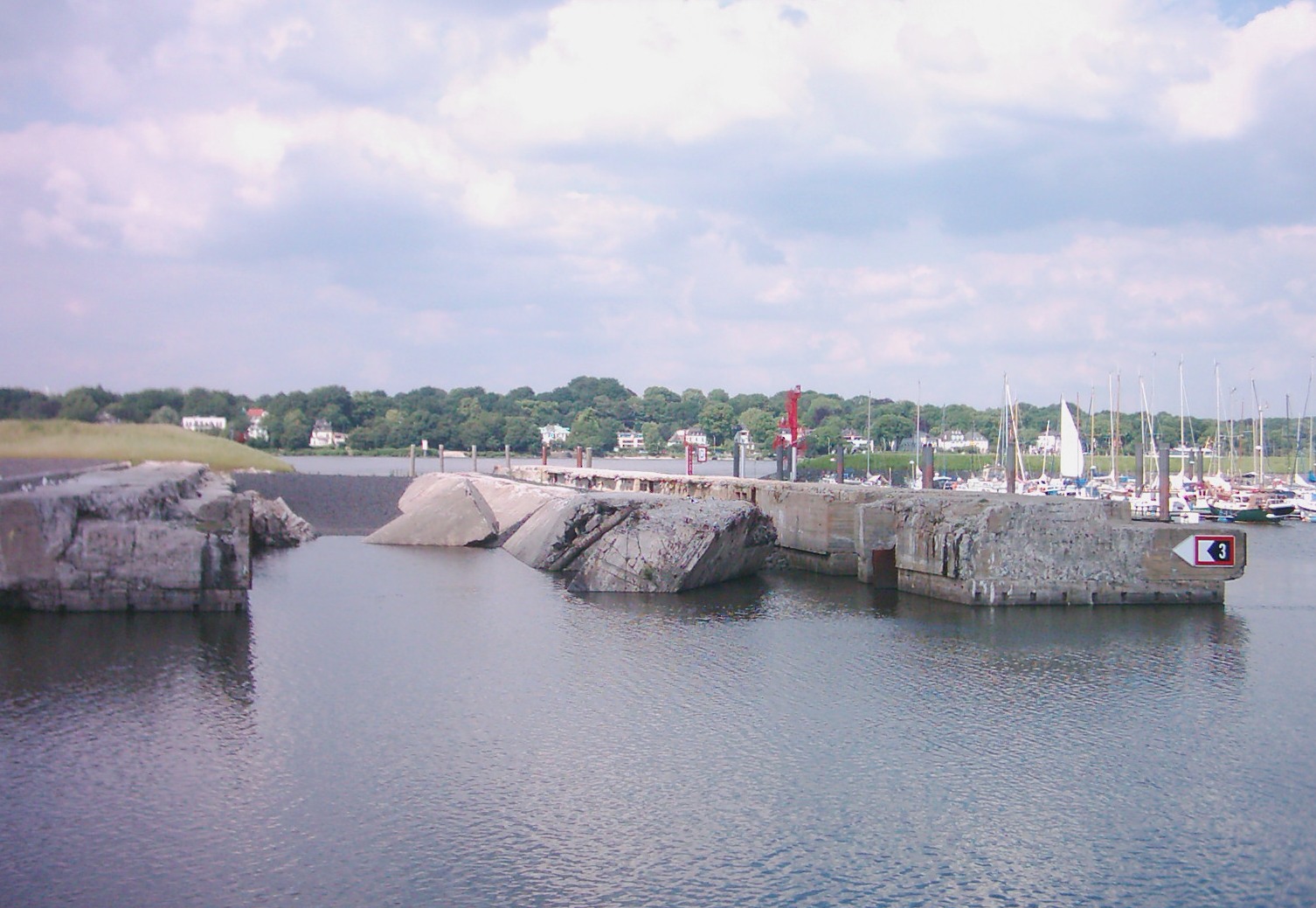
Following the Royal Engineer’s entombment of U-2505, U-3004, and what remained of U-3506 at Elbe II, the boats began to fall into a sort of liminal status. It was generally assumed, even by academic historians, that they had likely been scuttled in the River Elbe, and that their remnants were probably somewhere along the river bed. Their true, and very specific, location was not widely known outside of certain military, government, and industry circles for many decades thereafter.
In 1949, Hamburg’s authorities, aware of the locations of the U-boats, looked to see if there was a way of removing the bunker as well as the submarines within it. After a diver completed necessary checks to ensure they weren’t carrying torpedoes or other kinds of ammunition, former members of the Kriegsmarine were recruited to dismantle, or possibly even raise, the boats under the direction of British forces. Hans Loeck, the former chief engineer of U-2513, was appointed head of the salvage group.
In 1950, the remaining batteries, junker compressors, and all copper cables from U-2505 and U-3004 were all recovered, as was one of U-3004‘s two diesel engines. Further operations saw the sterns of U-2505 and U-3004 blown off, allowing for further materials to be salvaged from the wrecks — the precise nature of which remains unclear. Parts of U-3506‘s turret were dismantled at some stage, while U-2501, which had sunk in front of the bunker, was raised and eventually scrapped later in the decade.
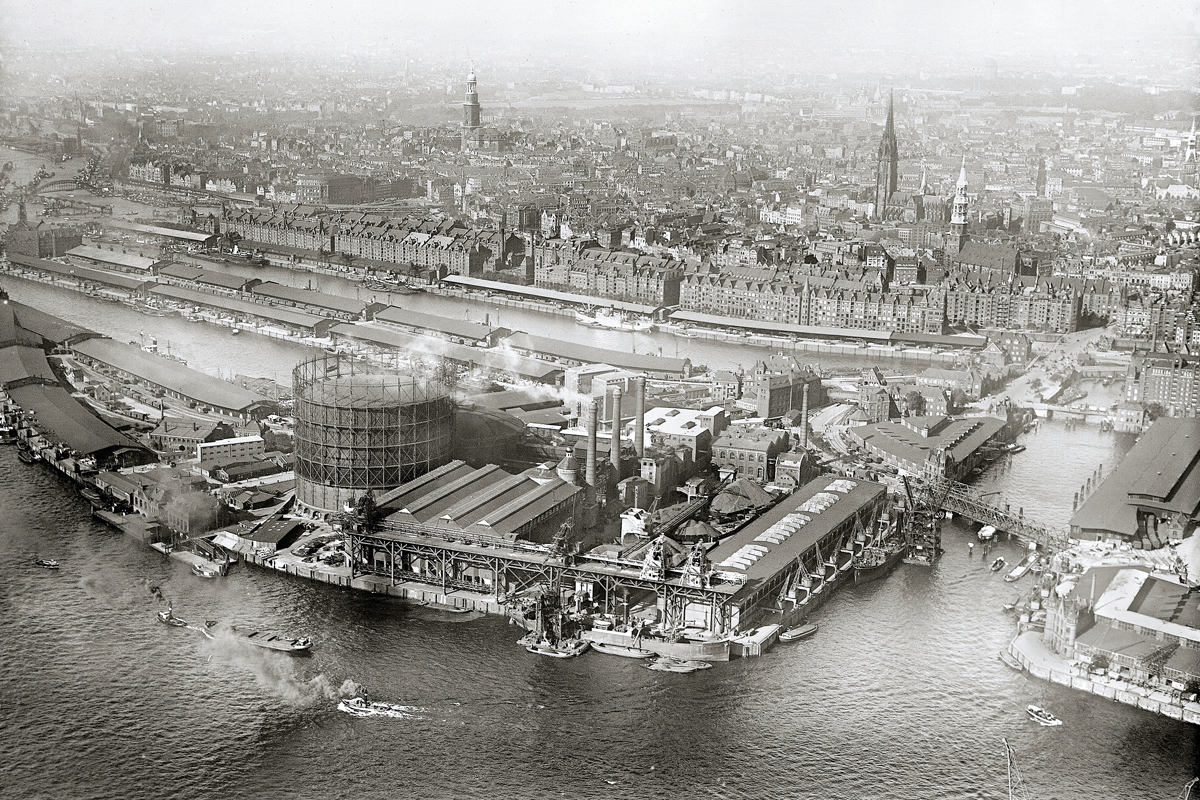
Owing to the unsafe nature of the bunker, work on its demolition during the 1950s was abandoned, and the site was fenced off. Although it was still visible to the naked eye, its out-of-the-way location, a few meters within the boundaries of the freeport of Hamburg, made accessing it geographically difficult. This was compounded by tight security around the area, with the location of the ruined bunker falling within the German shipping company Howaldtswerke-Deutsche Werft’s (HDW) sphere of operations. Access to the bunker was only possible via a separate, well-guarded entrance. However, if one had been able to access it, the dormant U-boats would have been visible at low tide.
In the early to mid 1960s, renewed attempts to demolish Elbe II’s remains came about in order to make further space for shipping. While a substantial amount of concrete was removed, the site was not altogether demolished, primarily due to rising costs.
Two decades went by before the existence of the U-boats garnered wider public attention, thanks largely to the work of Jak P. Mallmann-Showell. As he indicates in his book, Hitler’s U-Boat Bases, Mallmann-Showell was researching at the Royal Navy’s Submarine Museum at the shore establishment HMS Dolphin, southeast England, either at the end of 1984 or spring 1985.

At that time the Museum had been asked for help with identifying a possible U-boat housed within Elbe II, following the ‘confession’ of a former British soldier that he had removed a sighting cap from a submarine in Elbe II’s ruins while guarding the site in 1948. To this point, no official records had been unearthed suggesting that any U-boats were in fact in the bunkers and, to Mallmann-Showell’s knowledge, all the U-boats captured by the Allied had been scuttled between the end of 1945 and early 1946 during Operation Deadlight, bar a very small number.
How exactly this intriguing nugget of information was discovered in the first place remains unclear, but somehow Mallmann-Showell was able to get his hands on “a meter-high pile” of papers connected to Elbe II that arrived at the Museum while he was there.
“Curious to see what this recent release contained, I started to pull out some sheets about halfway up because they were the only ones sticking out at an untidy angle,” he explains in Hitler’s U-Boat Bases. “Imagine my surprise when this turned out to be a report… about the condition of the dock facilities around the Elbe II bunker. From… [the report] it was possible to identify the boats [there] as U3506, U3004 and U2505.”
An investigative letter subsequently sent to HDW was returned to Mallmann-Showell with an invitation to inspect the ruins at low tide. Along with Wolfgang Hirschfield, an ex-U-boat operator, he set off for Hamburg in the summer of 1985.

“Herr Traband, our guide from HDW, had known the site since the war and told us that nothing had changed a great deal. The U-boats were still lying there where they had been scuttled all those years earlier… the rusting hulks under the sloping roof were easily recognizable as Type XX1 U-boats.”
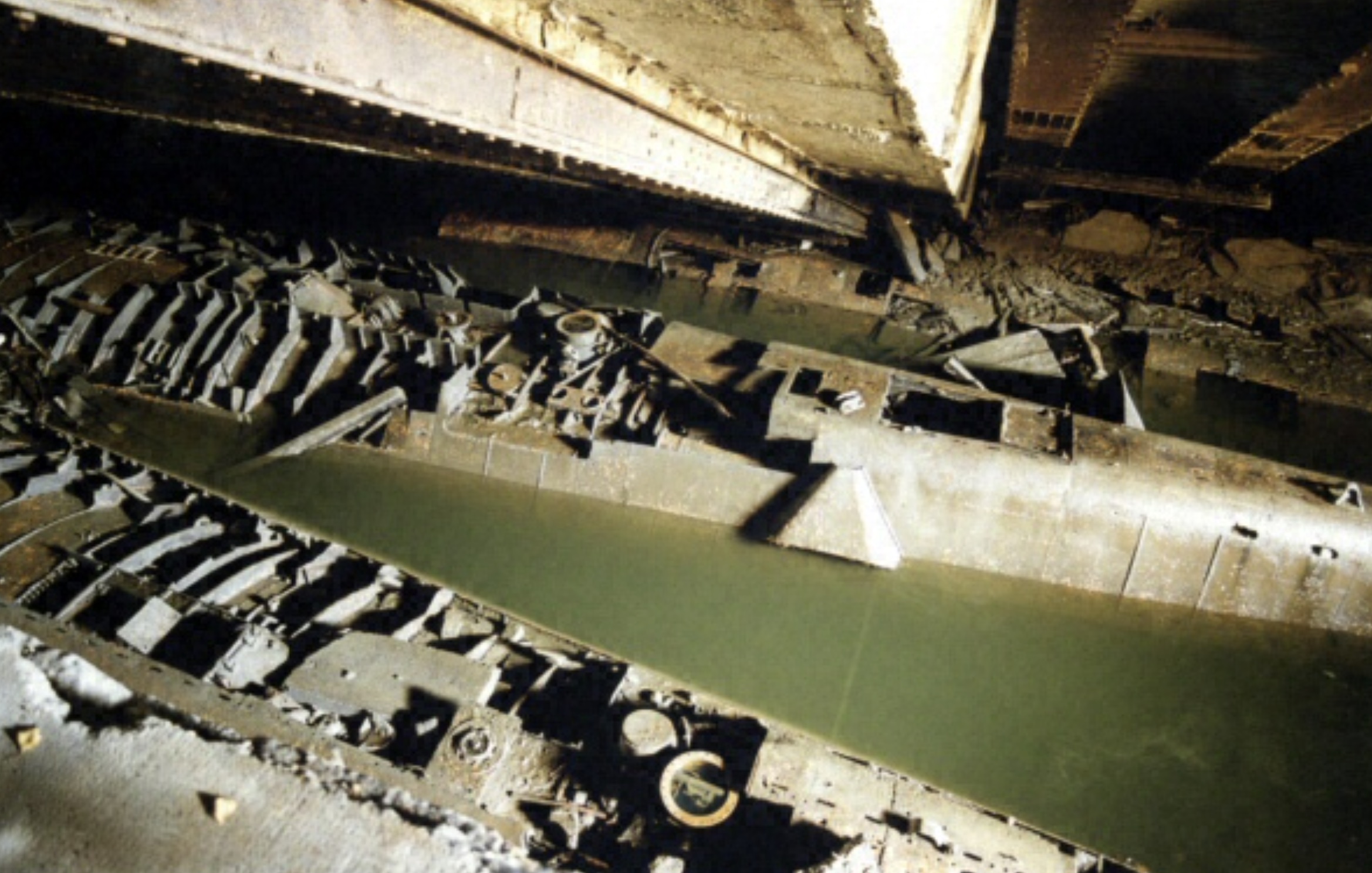
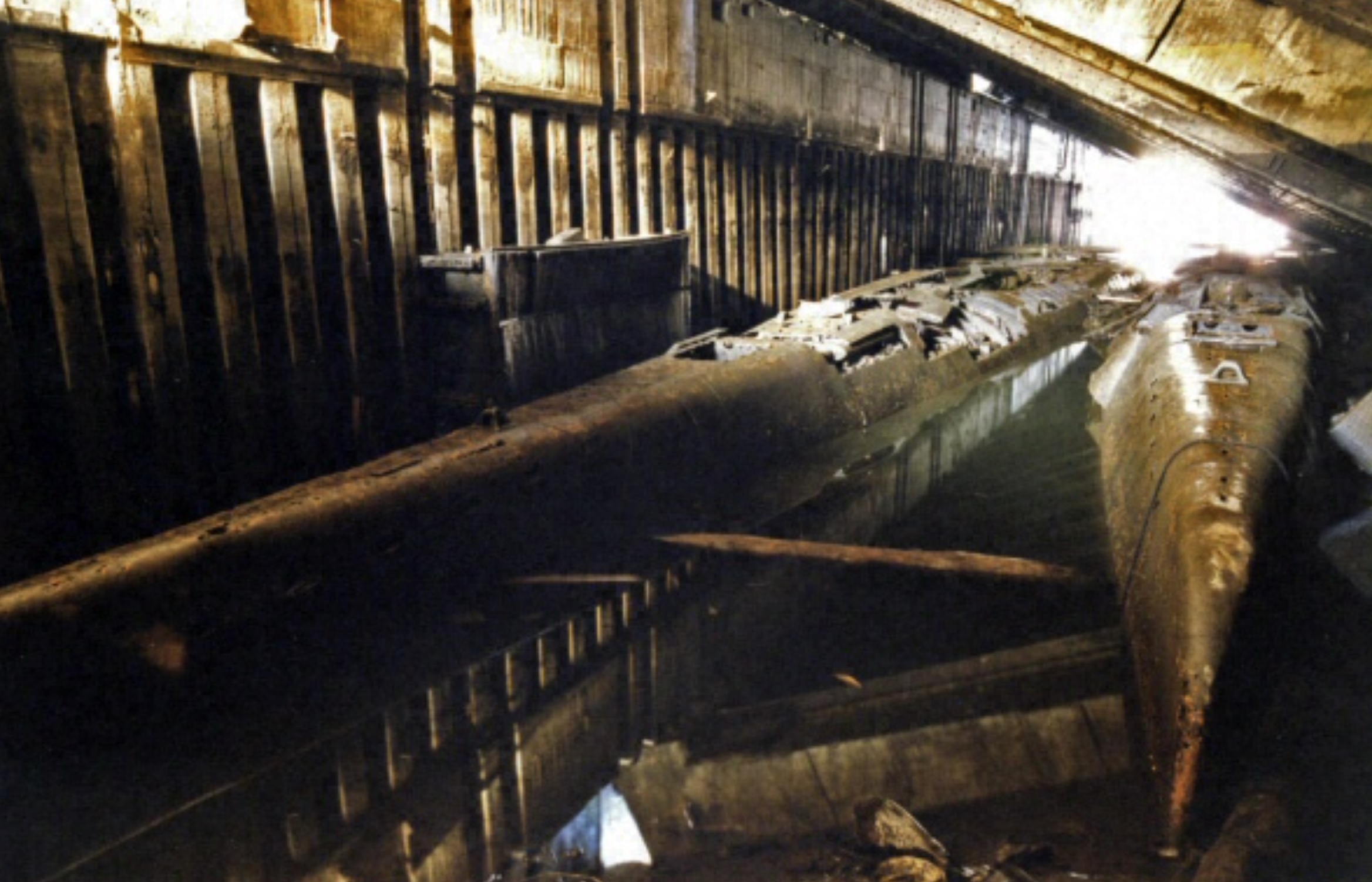


“Although Howaldtswerke-Deutsche Werft had known about them all along, the fact of their existence had hardly ever been allowed to trickle out and our accidental ‘discovery’ produced some intriguing responses. Many people didn’t believe us, even after they had seen photographic evidence; and then, when others took the trouble to verify the ‘find’, some groups battled for the credit of having done the research which led to the discovery. Indeed it was quickly heralded on the other side of the Atlantic as an American achievement!”
Later in 1985, HDW’s Hamburg yard ended up closing. With it, the security and fencing surrounding Elbe II were removed. In the years that followed, relic hunters were known to have visited the bunker, looking for artifacts to sell after the rediscovery of the U-boats.
In 1995, it was decided that owing to its unstable nature, something had to be done to permanently remove the bunker. Due to the exorbitant costs of totally demolishing it at that time, what remained of Elbe II was filled in from the inside with sand on October 8 of that year.
However, in June of 2001, renewed attempts to remove the ruins to ground level were made. 226 dynamite charges, with a total weight of 150 kilograms (just over 330 pounds), were used with little success; its walls stood unaffected and the ceiling tiles did not move. From there, the focus shifted to breaking down the structure into smaller chunks, which were then crushed via hydraulic machinery.
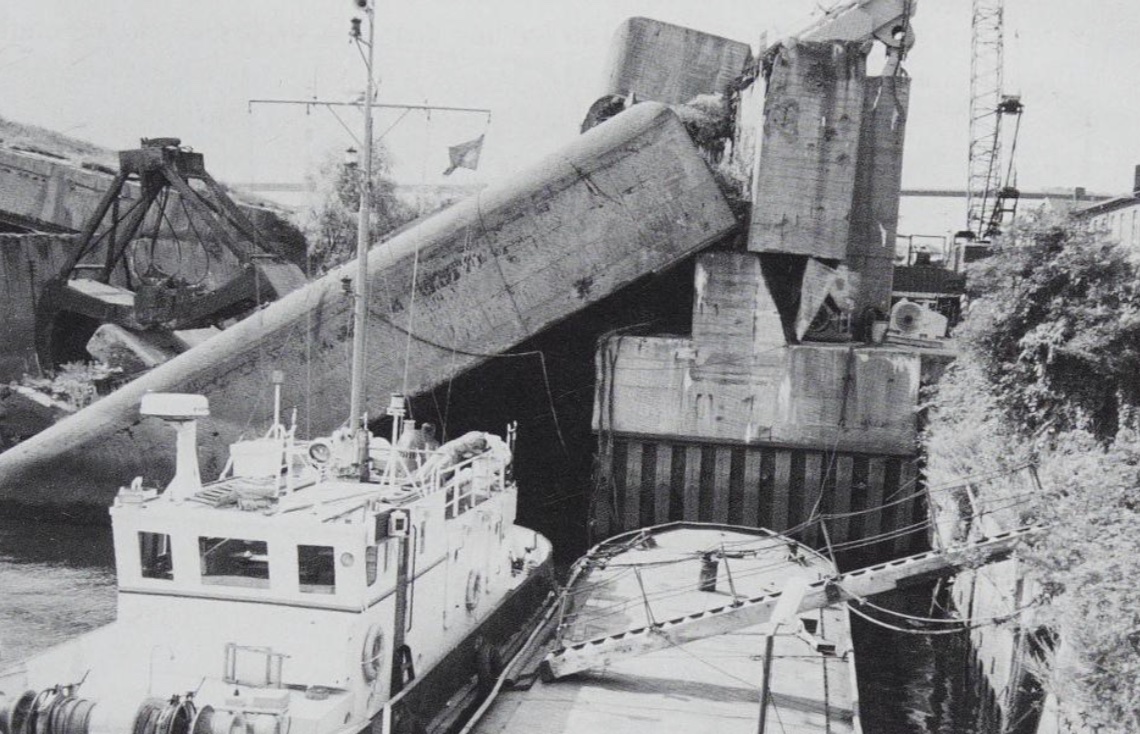
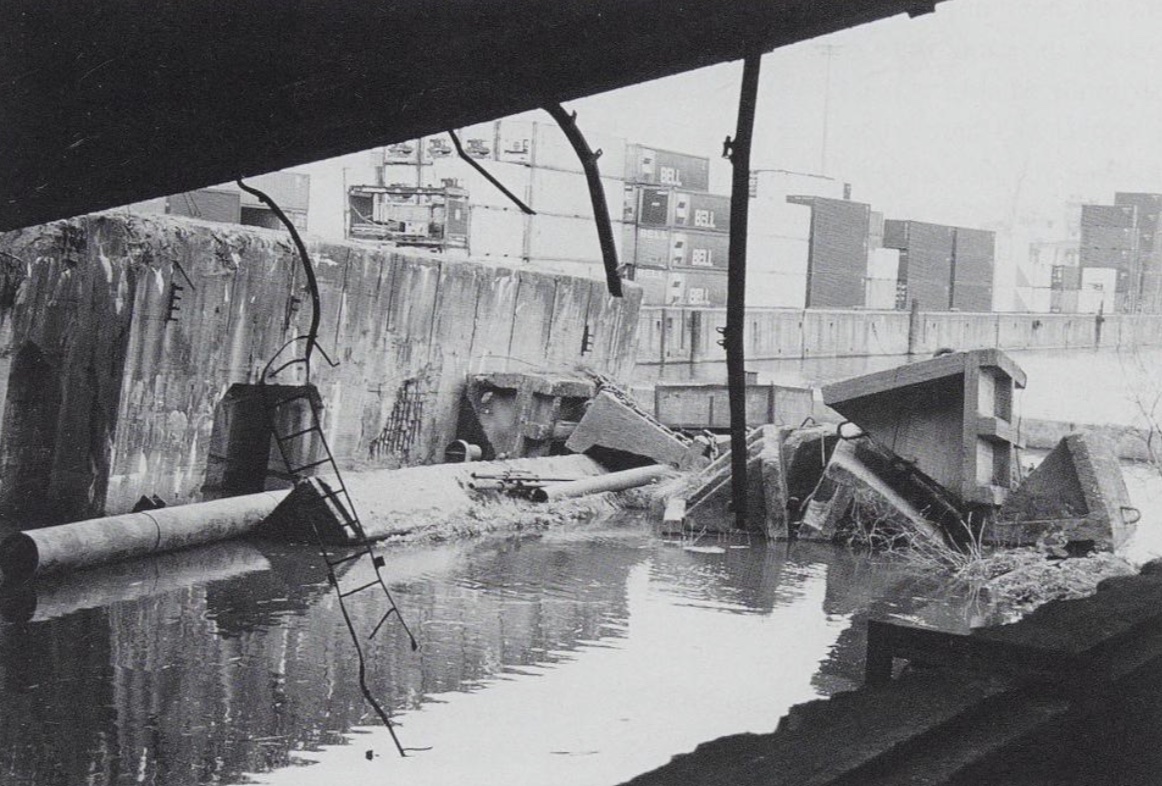



In the summer of 2003, Elbe II’s remnants were completely covered in a layer of earth which removed any visual signs of it. Today, it sits below HHLA‘s Container Terminal Tollerort (CTT), one of several shipping container terminals owned by that company, in the Port of Hamburg.

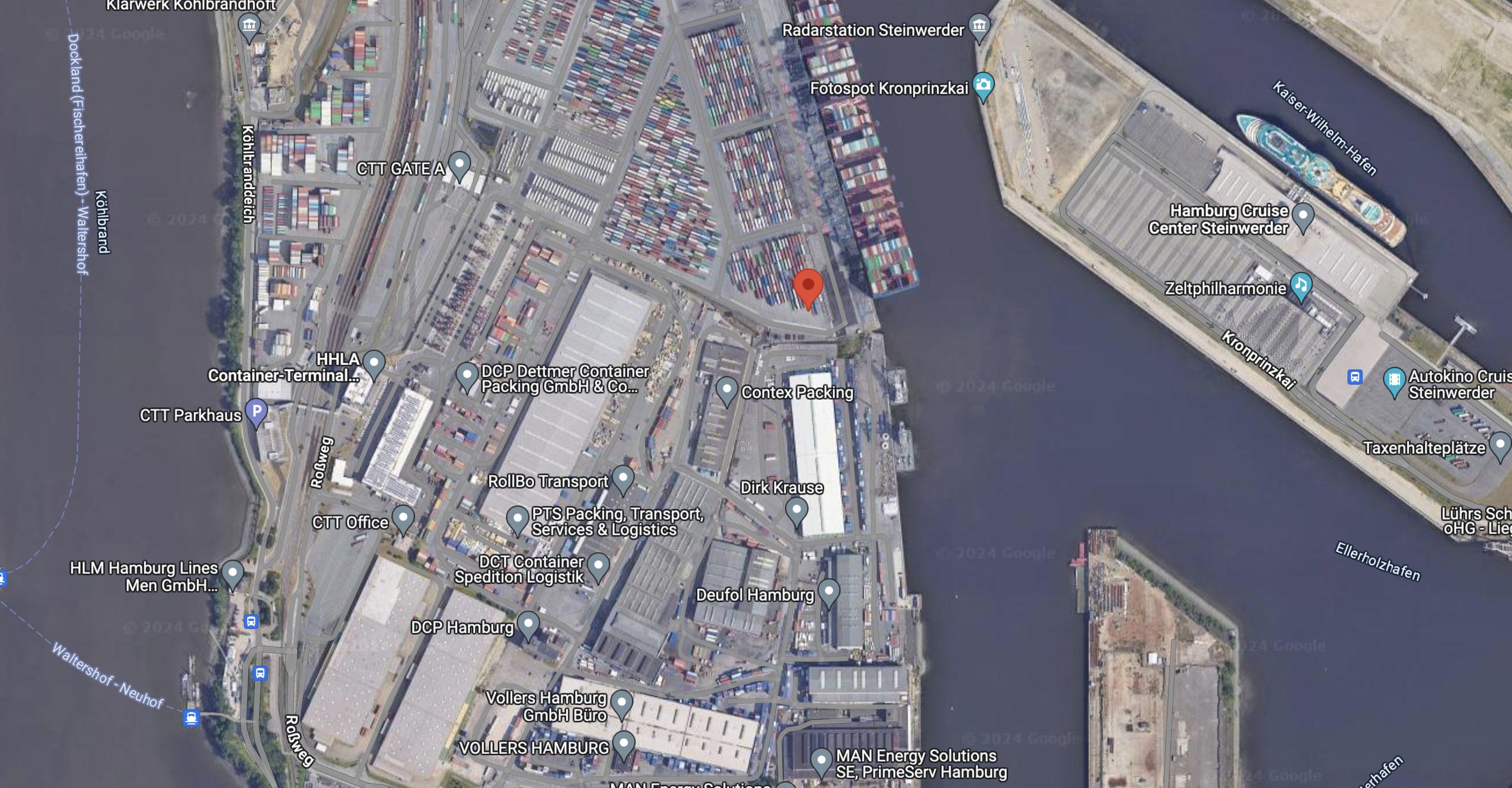

While Elbe II’s previously forgotten U-boats may no longer be visible, parts of those vessels still lie buried beneath the soil to this day. And, although they are buried, they are no longer forgotten.
Contact the author: oliver@thewarzone.com
